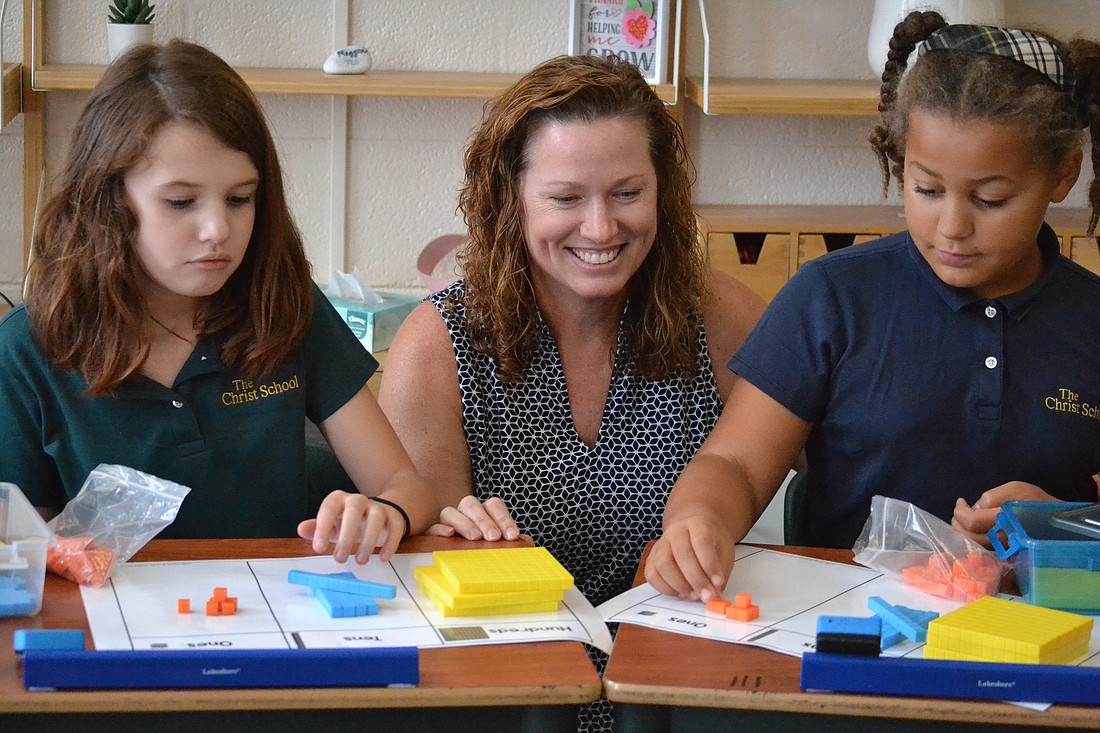- December 22, 2024
-
-
Loading

Loading

Three years since its inception, The Christ School’s The Bridge program received its Orton-Gillingham Academy accreditation to continue providing education to students in Central Florida with dyslexia.
“From the very beginning, we looked at what the (OGA) accreditation guidelines were, so we could get there, and we could be successful in getting it,” Alissa Plaisance, director of The Bridge and Student Support, said.
According to the Orton-Gillingham Academy website, “The Orton-Gillingham Approach is a research based approach, and has been used for many decades to successfully provide literacy remediation to students of all ages.”
This approach is used to help students with dyslexic better grasp the skills in the areas of reading, writing and spelling. It utilizes the various components that constitute the English language.
“For us, we teach the why of the spelling of words and why (words) are read the way they are,” Plaisance said. “Then we teach the students how to decode the words, the different syllable types and how to crack the code. … Then, we assess the students on those skills, so they are not just memorizing a bunch of words.”
Not only do the teachers provide the students with distinct skills so their brains can properly read the words but they also teach them math in a specific way.
“Math is introduced in a concrete way (as multi-sensory math),” Plaisance said. “There are manipulative ways to bring that concept to life and connect it to a representational level and, eventually, the paper-pencil abstract.”
THE BRIDGE
Together with Head of School Aaron Farrant, Plaisance worked toward implementing a program that provides dyslexic students a safe and efficient learning environment.
“He asked about where students with dyslexia go to school here (when he first got to the school five years ago),” Plaisance said. “We got into a wonderful conversation about the landscape of Central Florida, and we knew that we had certain families here who were doing tutoring after school, working with different therapists and piecing it all together. We really felt that there could be a better way.”
Thus, The Bridge was born. For its first two years, the program existed as a pull-out program before transitioning into a full-time offering.
At the beginning, the program only had four students. Now, there are 70 students enrolled, and more families reaching out to inquire about the program. Of those 70 students, 20 live in the Windermere, Winter Garden, Horizon West and Ocoee areas.
There is a ratio of 1:10 per classroom — except during the OGA hour, when students are separated into their breakout rooms and are in a 1:5 ratio. The intensity of this programs offers an hour of OGA a day to provide repetition to the students.
“The students are taught by different teachers (other than their homeroom teacher) who are specialized in whether it’s OGA reading or multi-sensory math,” Plaisance said. “We do phonological awareness drills, visual drills, reviewing words, go over our red words (irregular words that don’t follow a particular pattern) and introduce new material. We do that for a chunk of the lesson, and then we focus on a spelling piece and dictation for sounds, words, phrases and sentences and then, toward the end, we work on some oral reading as well.”
Teachers use a tactic called scoping sequence, which helps them determine students’ individual skill levels.
“It starts from the most basic vowel-consonant sound — Can the child read? Can they spell?” Plaisance said. “Then, that scoping sequence goes into all the way to Greek and Latin, much more rare words inner English language, so it does take quite a while to go through the scoping sequence. On average, to really provide that mediation, it takes anywhere from three to four years.”
The Bridge closely follows advice from Anna Gillingham: “You go as fast as you can but as slow as you need.” This creates a steady mindset for its students even when they leave the program.
Currently the program spans from second to sixth grades. Next year, it will begin in the first grade.
“We help them developing their schedules, making recommendation of classes and looking into accommodations the school can provide — like if they need extra time, using speech to text, keyboarding instead of handwriting for some kids or having a spot in the classroom that works well for them,” Plaisance said. “Those types of things (helps us and the student) create a student academic plan that transitions with them to their next school.”
The program also offers opportunities for parents fellowship and community engagement so families are able to connect and become a part of The Bridge community.